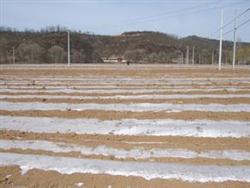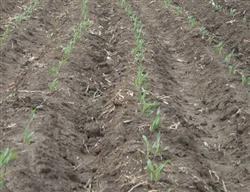The fertilization of spring corn should be "light in front and heavy in back".

Base fertilizer: spring corn is based on the basic fertilizer, supplemented by topdressing; farm fertilizer, supplemented by chemical fertilizer; nitrogen fertilizer, supplemented by phosphate fertilizer; ear fertilizer, supplemented by grain fertilizer. Base fertilizer should generally account for about 70% of the total fertilization, and most phosphate fertilizers should also be applied in combination with base fertilizer, usually in combination with autumn ploughing in the previous year. When applying base fertilizer, it should be evenly mixed with soil, generally applying 37.5-60 tons of farm manure per hectare. If nitrogen fertilizer is used as base fertilizer, 375 kg of ammonium bicarbonate or 150 kg of urea can be applied per hectare. It must be applied deeply to prevent the loss of nitrogen volatilization. In phosphorus-deficient soils, 450 kg of calcium applied per hectare; 150 kg of potassium chloride per hectare in potassium-deficient soils; and 15 kg of zinc sulfate heptahydrate per hectare in zinc-deficient soils. Seed fertilizer: before spring sowing, use a small amount of farm manure combined with appropriate amount of nitrogen and phosphorus fertilizer strip or hole application, as corn seed fertilizer. Topdressing: topdressing of corn is an important measure for high-yield cultivation of corn. Because the growth period of spring corn is longer, the seedling stage grows slowly and absorbs less nutrients, the topdressing of spring corn mostly adopts the fertilization method of "light in the front and heavy in the second", that is, before jointing, the amount of urea is 75kg / ha, 150kg / ha and 2cm / ha, respectively, so as to meet the nutrient needs of spikelet, floret differentiation and grain formation stage of maize. The experimental results show that the yield of spring corn is 13.3% higher than that of "light before heavy" fertilization.
- Prev

Cultivation techniques of Spring Maize intercropping and Autumn Cucumber
Soil preparation and fertilization should be planted in plots with sunny, ventilated, deep soil layer, loose, fertile, adequate water source and good drainage. The base fertilizer should be mainly organic fertilizer, combined with autumn ploughing, the earlier the better, so that the fertilizer can be fully decomposed and integrated with the soil. According to the experiment, the yield of applying base fertilizer in autumn is 14.9% higher than that in spring.
- Next

High-ridge sparse planting and High-yield cultivation techniques of Spring Maize
At present, many fine spring maize varieties need high ridge and sparse planting, but farmers generally use low ridge and close planting, which makes the good characters of corn can not be fully shown, which seriously affects the increase of farmers' income. Especially Dongdan 60, Sanbei 6, Dongdan 13, Zunyan 1, the number of plants per mu can not exceed 3000, and.
Related
- The first cup of black tea in spring, the flavor and history of tea gardens in Kenya, Africa
- The computer can not only choose potatoes, but also grow tea rice. AI will grow winter oolong tea champion.
- It is not only the inflated tea bitten by insects, but also engraved with the four seasons tea in Beipu.
- The Oriental Beauty Tea Festival in Zhuxian County takes the stage at the weekend to experience the plus-size feast of oil tea.
- & quot; Oriental Beauty Tea & Exploration of Emei in Hsinchu, the hometown of quot;
- The new variety of strawberry "Tainong 1" dessert is the first choice with mellow aroma. Crimson gorgeous
- History of Tea in Taiwan: from Wild Inner Mountain to Export Tea Garden
- Two types of Taiwan Oriental Beauty Black Tea won the British three-Star Award for Childhood Tea Xiang Zhang Jiaqi changed from pilot to champion tea maker.
- Banana species and varieties: the planting history of Taiwan Xianren banana and dwarf banana is long, is banana disease resistant?
- Coffee planting Technology: Qianjie Coffee from Seedling to harvesting

